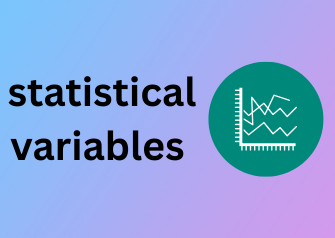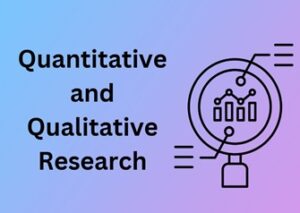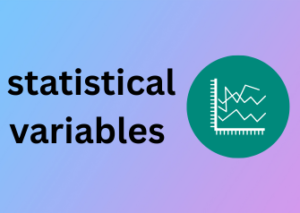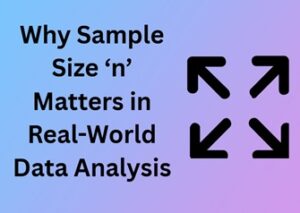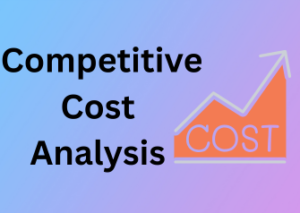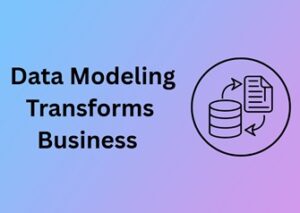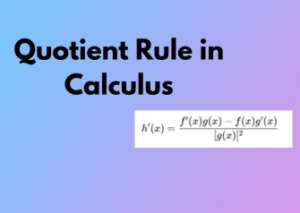So, What Exactly Is a Variable?
A variable is like a blank label that you can stick on anything, numbers, names, even opinions! It represents something that can change or vary over time, across different scenarios, or between people. For example:
- The temperature you check every morning? That’s a variable!
- Your monthly expenses? Another variable!
- How many cups of coffee you’ve had today? Yep, variable again.
The beauty of variables is their simplicity. They take something messy, raw, unorganized information, and help you understand it so you can analyze, compare, or predict outcomes. Whether you’re tracking personal habits or solving complex problems, variables are the unsung heroes behind the scenes.
Why Are Variables So Important?
Imagine trying to solve a mystery without any clues. That’s life without variables! They provide the structure you need to answer questions and uncover patterns. For instance:
- Need to figure out how exercise affects your energy levels? You’d use variables like workout time (input) and energy level (output).
- Wondering if longer study sessions lead to better test scores? You’ll be working with variables like study time and grades.
With variables, you can organize and interpret any type of data, big or small, with ease.
Common Types of Variables
Before we dive too deep (and no, we’re not jumping into yet another math lecture), it’s good to know that variables come in all shapes and sizes. Here’s a sneak peek:
- Categorical Variables: These represent categories or groups, like eye colors (blue, green, brown).
- Numerical Variables: These deal with numbers, like your height or weight.
- Dependent and Independent Variables: These come into play when you’re trying to find relationships between things, more on that in another section!
But don’t stress, these are just names for different types of data. What matters is recognizing that variables are flexible little tools that can adapt to whatever question or problem you’re tackling.
The Building Blocks: Classifying Variables for Real-world Use

Imagine trying to build a sturdy house without understanding the difference between bricks, wood, and metal. Sounds impossible, right? Well, the same applies to working with variables, those tiny pieces of data magic that are essential in research, science, and everyday life! But before we can use them effectively, it’s crucial to classify them. So, let’s break it down together in a fun and relatable way.
Why Classifying Variables is Key
Why bother putting variables into neat little categories anyway? The answer is simple: organization leads to clarity. By assigning variables to different classifications, it becomes easier to handle data, interpret results, and make sense of patterns in the world around us. Whether you’re analyzing survey responses or tracking weather changes, knowing your variable types helps you stay in control.
Types of Variable Classifications
So, how do we categorize variables? Let’s build a quick mental framework. These are the key ways variables can be classified. Think of it like organizing your closet, every item has its own place!
- By the Nature of Data: Some variables capture raw numbers, while others describe qualities. We’ll call these quantitative and qualitative, though we’ll save a deeper dive for later. For now, just know that this is a fundamental distinction.
- On a Scale of Measurement: Variables can be sorted into nominal, ordinal, interval, or ratio scales. Don’t let the jargon scare you, we’ll touch on this more briefly.
- Nominal: Think of categories like favorite colors (red, blue, green).
- Ordinal: Ranks, like a Top 5 list, where order matters but differences aren’t equal.
- Interval: Measures with consistent differences, like temperature in Celsius.
- Ratio: Data with a true zero point, like weight or height.
- Temporal Relationships: Variables can also be independent (taking the lead) or dependent (responding to changes). This classification heavily influences how we study cause-and-effect in research. But again, that’s a topic for another day!
- Special Contexts: Sometimes variables need unique labels based on specific uses. For example, demographics like age or income in a sociological study work differently than chemical properties in a lab experiment.
How This Helps in the Real World
Let’s bring this back to real-world use. Think about planning a road trip. You’d classify the type of stops you want, gas, food, or attractions. Similarly, in data analysis, sorting variables into neat, understandable categories saves time and eliminates guesswork.
For researchers, entrepreneurs, and even creative thinkers, properly classified variables provide a solid foundation for better decision-making. Whether you’re crunching numbers in a business meeting or prepping your thesis paper, understanding variable classification ensures you’re off to a smarter start.
Quantitative vs. Qualitative: Breaking Down the Two Big Camps
Ah, variables! They’re the DNA of data, tiny building blocks that give structure to every study, report, or analysis you do. When it comes to categorizing these fascinating pieces of information, one of the most significant divides is between quantitative and qualitative variables. Let’s explore what they are, how they differ, and why understanding this division can take your data interpretation skills to the next level.
What Are Quantitative Variables?
Let’s start with the numbers. Quantitative variables deal exclusively with numerical data. These are variables you can measure, count, and use to perform mathematical operations. Think weight, height, test scores, income, anything that can be expressed with numbers.
When working with quantitative variables, the focus is not just on the numbers themselves, but also what you can do with them. For example:
- You can calculate averages.
- You can identify patterns or trends, like an increase in sales over time.
- You can divide them further into subcategories (spoiler alert for heading IV: continuous vs. discrete).
In short, quantitative variables let you observe the differences in magnitude between data points. They speak the universal language of math, and math, as we know, is the ultimate truth-teller!
What About Qualitative Variables?
On the flip side, we have qualitative variables, often called categorical variables. These don’t concern themselves with numbers but rather focus on names, categories, or qualities. Instead of “how much” or “how many,” the question they answer is what kind For instance:
- Your favorite color (blue, green, red).
- The genre of a movie (comedy, drama, thriller).
- The type of coffee you order (latte, espresso, cappuccino).
Qualitative variables categorize data into distinct groups. They’re amazing at describing your dataset’s characteristics and can add depth and storytelling to your analysis by pointing out differences or commonalities between groups. However, unlike quantitative variables, you can’t crunch them into averages or percentages as easily, though frequency counts and proportions often come in handy here.
Why Does This Distinction Matter?
Understanding whether your data is quantitative or qualitative is a crucial first step in deciding how to analyze it. Here’s why:
- Different methods of analysis: Statistical tools and techniques are often designed with one specific type of variable in mind. You wouldn’t use the same approach to analyze average weight (quantitative) as you would to analyze survey responses about favorite pizza toppings (qualitative).
- Improves clarity: By identifying whether a variable is quantitative or qualitative, you reduce confusion and gain clarity about the trends or relationships in your data.
- Data collection efficiency: When you know the type of variables you’re working with, you can design better, more targeted data collection tools such as surveys or experiments.
Real-World Application

Imagine you’re running a customer satisfaction survey. You ask for both a star rating (quantitative) and the reason behind their rating (qualitative). The numbers give you a measurable score, while the explanations help uncover deeper insights. Quantitative data might show that satisfaction scores dropped by 10% in the last month, but qualitative responses might reveal that customers don’t like your app’s new user interface. See how they work together for a fuller picture?
Continuous and Discrete Variables: Cracking the Numbers Game
When we talk about variables in mathematics, statistics, or data analysis, we often stumble onto two key types: continuous and discrete variables. While these words might initially seem like jargon, they’re actually pretty straightforward. Let’s break it down in a way that makes sense, and maybe even fun!
What Are Continuous Variables?
Think of continuous variables as the smooth talkers in the numbers game. These guys can take on any value within a specific range, meaning they’re essentially infinite. Imagine measuring someone’s height. You can’t just stop at 5 feet or 6 feet; height might be 5.8 feet, 5.83 feet, or even 5.83172 feet! The level of precision knows no bound, you could go on measuring decimals forever (well, aside from practical limits).
Other examples of continuous variables include:
- Temperature (e.g., 72.5°F or 21.3°C)
- Time (e.g., it took 4.56 seconds to finish a race)
- Weight (e.g., a person weighs 155.8 pounds)
In essence, continuous variables are ideal for things you can measure and divide into infinitely small increments.
How About Discrete Variables?
On the flip side, we have discrete variables—the results of counting, rather than measuring. These are the numbers with structure and boundaries. A discrete variable takes on fixed, distinct values that you can count (no fractions, no in-betweens).
For example, let’s count the number of pets in your neighbor’s house. There might be 0, 1, 2, or 5 pets, but no one’s walking around saying that they have 2.3 pets! Discrete data keeps things tidy and straightforward. Here are a few other examples:
- The number of students in a classroom
- Rolls of a dice (1 through 6, who gets 4.5 on a die roll?)
- The number of goals scored in a soccer match
In short, discrete variables stick to distinct, countable values, making them easier to manage and categorize in certain scenarios.
Why Does This Distinction Matter?
If you’re working with data, the difference between continuous and discrete variables isn’t just trivia, it’s crucial. It affects how you collect, visualize, and analyze your data. Continuous variables often work beautifully with scatterplots, line graphs, or histograms because they have a flow. Meanwhile, discrete variables are better represented by bar charts or pie charts since they involve distinct, separate categories.
When conducting statistical tests, knowing the nature of your variable can also help you choose the right approach. For instance, a t-test or regression analysis often involves continuous variables, whereas chi-square tests frequently handle discrete data.
So, Are They Opposites?
Not really, it’s better to think of them as two pieces of the same puzzle. Continuous variables allow for intricate detail and infinite possibilities, while discrete variables shine with clarity and precision. Both are equally important, depending on the story your data needs to tell.
And hey, why stop at just understanding the difference? Look around in your daily life. Spot the continuous and discrete variables happening everywhere, from your car’s odometer (continuous) to the number of books on your shelf (discrete). The numbers are waiting for you to notice them!
So go ahead, crack the numbers game. With these new perspectives on continuous and discrete variables, you’re well on your way to mastering the art of working with data!
Differentiating Dependent and Independent Variables: Why It Matters
Ever wondered what makes some variables the backbone of research and others their trusty sidekick? Enter the fascinating world of dependent and independent variables, two concepts that are the lifeblood of experiments, analysis, and decision-making. Whether you’re gearing up to tackle a science project or dive head-first into data analysis, understanding this duo is essential. Let’s break it down and see why knowing the difference really matters!
What Is an Independent Variable?
Let’s start with the star of the show: the independent variable. Think of it as the variable you control or manipulate. It’s the catalyst, the variable that paves the way for changes or results in your study. Essentially, it’s the cause in a cause-and-effect relationship. You get to decide its value and see how it impacts the situation.
For example, if you’re testing how sunlight affects plant growth, the amount of sunlight each plant gets would be your independent variable. You control it, it’s your choice whether you leave the plant in full light, partial shade, or total darkness. Pretty cool, right?
What About the Dependent Variable?
Now, meet our other key player: the dependent variable. This one is not so much a catalyst as a result. The dependent variable is what you measure and observe. It’s the “effect” in the cause-and-effect chain we just mentioned.
In the same plant growth experiment, the dependent variable would be the size of the plants. How tall does each one grow? How many leaves does it sprout? These outcomes are directly influenced by the changes you made to the independent variable (the sunlight). Essentially, this variable depends on the choices you made. That’s why it’s called, you guessed it, dependent!
Why Should You Care?
Alright, so why does this distinction matter? Understanding the difference between independent and dependent variables can make or break your research success. Here’s why:
- Clarity in Experiments: Knowing which variable you can control and which one you’re observing helps you set up a clear, testable hypothesis. A solid experiment always has well-defined independent and dependent variables.
- Stronger Connections: When you clearly identify these variables, it’s easier to understand cause-and-effect relationships, which are crucial in fields like science, psychology, and business.
- Effective Data Analysis: Data can get messy if you’re not sure what’s causing what! For example, assigning the wrong variable labels can lead to misinterpretations. Knowing the roles removes this confusion.
Tips for Spotting the Difference
If you’re ever confused, here’s how to quickly identify the two variables:
- Ask yourself, What am I changing in this scenario? The answer is your independent variable.
- Then ask, What result am I measuring or observing as a response to that change? That’s your dependent variable.
Everyday Examples: Variables in Action Across Different Fields
Let’s demystify the concept of variables by diving into how they play out in the real world! While terms like variables might seem reserved for researchers or data analysts, the truth is that they’re everywhere, impacting decisions across industries, disciplines, and even your daily life. By the end of this, you’ll get why variables are the secret sauce behind how the world functions so smoothly (well, most of the time). Buckle up for some everyday examples!
Variables in Healthcare

Imagine a scientist studying the effectiveness of a new headache medication. The amount of medication given to patients (say, 50mg, 100mg, or 200mg) is a variable—let’s call it the independent variable. What’s being measured, such as the severity of headaches after taking the medication, is the dependent variable. Without carefully tracking these variables, it would be impossible to evaluate if the drug is working or not.
Even closer to home, think about the variables your fitness app uses. Steps taken, calories burned, and heart rate are all variable metrics that change daily, giving you meaningful feedback about your health journey.
Variables in Business
Businesses are masters at working with variables, even if they don’t use that exact name. Revenue, profit margins, customer satisfaction, and employee turnover are all examples of measurable factors that business leaders track closely. For instance, a company might study how offering discounts (independent variable) impacts monthly sales (dependent variable).
On a more personal level here, think about how shopkeepers tweak things like store layout or product pricing to see what boosts sales. Without tracking these variables, businesses wouldn’t know what’s helping, or what’s hurting, their bottom line.
Variables in Education
Education systems are another hotbed for variables at work. Teachers, for example, alter teaching methods (independent variable) to see if it improves student test scores (dependent variable). Meanwhile, schools might track factors like student attendance and study time to predict academic success. The data gathered helps shape better strategies for learning.
Even as a student, variables affect you more than you realize. For instance, how much sleep you get (independent variable) might directly influence your focus or energy levels in class (dependent variable), something to think about as you pull an all-nighter!
Variables in Weather Forecasting
Ever checked the weather and wondered how they predict storms or sunny skies? Variables are the answer! Meteorologists use temperature, humidity, wind speed, and rainfall levels—all variables—to create accurate forecasts. These variables constantly change, challenging scientists to analyze them dynamically for meaningful predictions. So yes, even your plans for a beach day hinge on variables!
Variables in Your Personal Life
Let’s get personal. Think about the decisions you make every day. If you’re cooking dinner, you might evaluate variables like the available ingredients, preparation time, or personal preferences. Or, if you’re saving for a trip, you could track your monthly expenses, income, and savings goals to ensure you stay on target.
Basically, whether you realize it or not, your everyday life is a constant experiment with countless variables influencing the outcome!
Why Does This Matter?
Understanding how variables work in real-world scenarios helps you make smarter decisions, spot patterns, and solve problems more effectively. Whether you’re crunching data for a project, managing your finances, or simply trying to improve your morning routine, recognizing variables gives you an edge. It’s not just for scientists or mathematicians—it’s for everyone.
Why Choosing the Right Variable Matters
When it comes to data analysis, variables are the cornerstone of your work. But let’s face it—choosing the right variable can feel a bit overwhelming, especially when you’re staring at a sea of data points, each screaming for attention. Don’t worry; we’ve all been there. The key is to start with a clear understanding of your objective and work backward. Are you aiming to identify trends, make predictions, or test relationships? The type of variable you choose will influence the outcome, so it’s crucial to get this step right.
Ask the Right Questions
Before diving into your data, take a step back and ask yourself a few important questions:
- What is the goal of my analysis? (E.g., identifying patterns or making strategic decisions)
- What kind of data am I working with? Is it categorical or numerical?
- Are my variables measurable? Are they properly defined?
By starting with these questions, you create a roadmap for identifying the variables that will best serve your analysis.
Understand the Data Types
Variables come in all shapes and sizes, but the foundation of a good analysis lies in recognizing their type. Here’s a quick breakdown:
- Nominal Variables: These are simple labels without any inherent order (e.g., colors, names, or categories).
- Ordinal Variables: A step up from nominal, these have a meaningful order (e.g., rankings, satisfaction levels).
- Continuous Variables: These are numerical and can take on any value within a range (e.g., height, temperature).
- Discrete Variables: These are also numerical but take specific counts (e.g., the number of students in a class).
Knowing what type of data you’re handling allows you to better align your variables with your analytical goals.
Match Variables to Methods
Once you’ve identified your variable types, the next step is to align them with the right analysis methods. For example:
- Regression Analysis: Ideal for exploring the relationship between a dependent variable and one or more independent variables (especially when both are numerical).
- Chi-Square Test: Perfect for nominal variables when you’re analyzing the association between categories.
- Time-Series Analysis: Use this for continuous variables to identify trends over time.
Pro tip? Always choose methods that complement your variable types. A mismatch here could lead to misleading results.
Keep It Clean and Consistent
Data consistency is often overlooked but incredibly powerful. For example:
- Ensure all variables are accurately measured. Avoid mixing degrees Fahrenheit with Celsius, or your analysis might feel as chilly as a freezer mishap!
- If you’re working with categorical variables, standardize naming conventions. “NYC” and “New York City” might mean the same to you, but not to your dataset.
Clean data makes it easier to trust the insights you extract.
Make Revisions as You Go
Here’s the truth: choosing the right variable might take some trial and error. Sometimes, you’ll find that a variable you thought was perfect isn’t quite delivering the insights you need. And that’s okay! Being flexible and willing to pivot is all part of the process.

